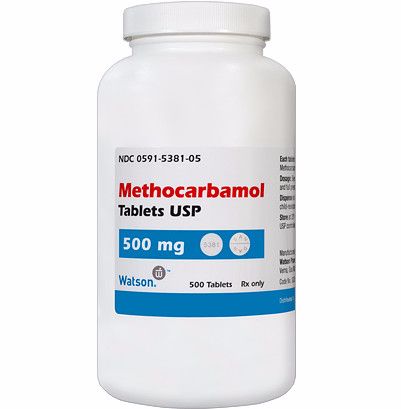
Thousands of drugs are used to treat opiate addiction. Medical treatment is required in such cases because of the patient’s critical condition and various symptoms of abstinence, or drug withdrawal.
Addiction medicine specialists observe that the same drug can be helpful for some patients and harmful for others. That is why each drug must be prescribed by and taken under the care of a qualified health professional.
Medical Use of Methocarbamol
This drug exerts the following effects:
- skeletal and smooth muscles relaxation;
- blocking of nerve impulses (or pain sensations) sent to the brain;
- sedative and depressant effects.
These properties can help treat:
- severe muscle pain caused by injuries;
- stupor;
- palotogical spasms and cramps;
- intrusive fears, sudden panic attacks, groundless depression.
How Methocarbamol effects an Opiate Addict
This drug helps relieve:
- withdrawal muscle pains;
- anxiety, phobia attacks, psychomotor excitement;
- troubled sleep;
- сhills, shivering;
- restless legs syndrome (RLS);
- gastrointestinal tract disorders.
Beside the mentioned symptoms, methocarbamol also helps treat other rare ones. It may relieve a few pathological characteristics. For effective treatment, methocarbamol can be combined with other drugs. However, some patients have reported that the treatment worsened their condition.
How to Use Methocarbamol for Opiate Withdrawal Treatment
Dosage, frequency and administration duration of this drug depends on:
- an addict’s condition;
- disease stage;
- organism response;
- side effects;
- combination with other drugs;
The following method of administration is usually used:
- Oral. 1.5 g, 4 times daily at regular intervals between doses for the first 2-3 days, up to a maximum dosage of 8 g. Then switch to maintenance therapy – 1 g, 4 to 5 times daily.
- IM or IV Injections. 1 g, 3 times daily. For use when oral therapy is impossible.
- For severe symptoms. 1 to 2 g directly into IV tubing, followed by an additional 1 to 2 g by IV infusion for 1 hour. This procedure may be repeated every 6 hours. Then, after improvements in a patient’s condition, switch to IM or IV injections (see 2), or oral medications (see 1).
The therapy should be short-term. If the treatment turns out not to be effective, other medications must be considered.
Caution should be exercised in the following cases:
- liability for allergic reactions;
- elderly age;
- activities that require to be alert;
- chronic heart and/or digestive diseases;
- mental and neurological disorders.
It should be kept in mind that methocarbamol has addiction potential and long-term administration can lead to discontinuation syndrome.
Methocarbamol treatment should be discontinued in the following instances:
- fever and chills;
- fall in the heart rate to 55 BPM;
- spasms;
- icterus.
Consider cutting down on dosage if the following side effects occur:
- headaches accompanied by vertigo, difficulties walking, mental impairment;
- nausea, vomiting, belching, heartburn, stomachache;
- blurred vision;
- skin rashes, itch;
- other disorders.
Some patients can show symptoms of methocarbamol overdose:
- weakness, drowsiness, sopor;
- fainting;
- fibrillary contractions, cramps;
- spasms and swelling of the throat.
If you suffer any of these symptoms, you should immediately call your doctor or 911.
Methocarbamol Effectiveness for Opiate Withdrawal Treatment
If used alone, methocarbamol won’t treat severe abstinence syndrome. It can only relieve some of withdrawal symptoms. Do not take a risk and self-medicate using methocarbamol. Only a professional health specialist can help you overcome opiate addiction and find the treatment plan that works best for you.
